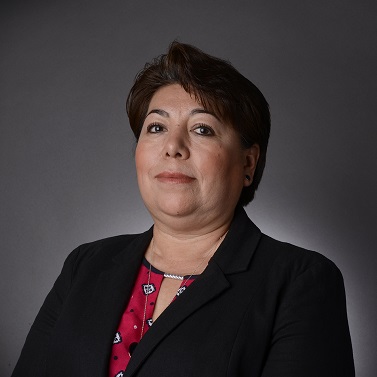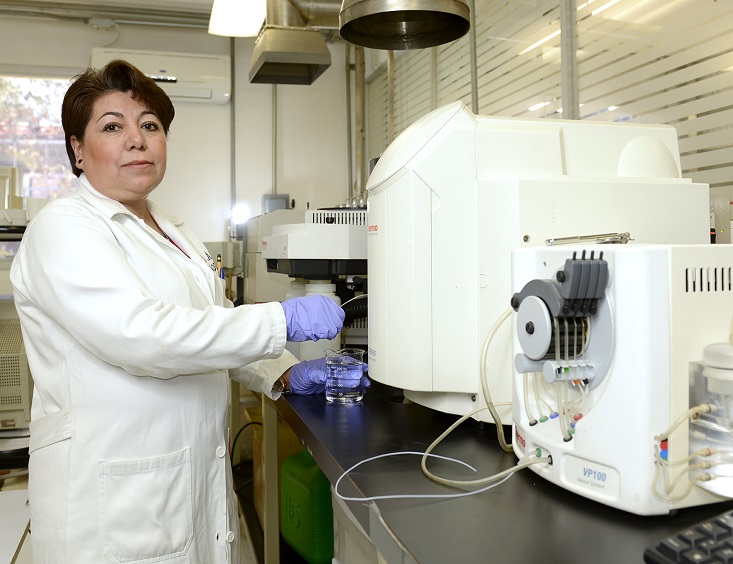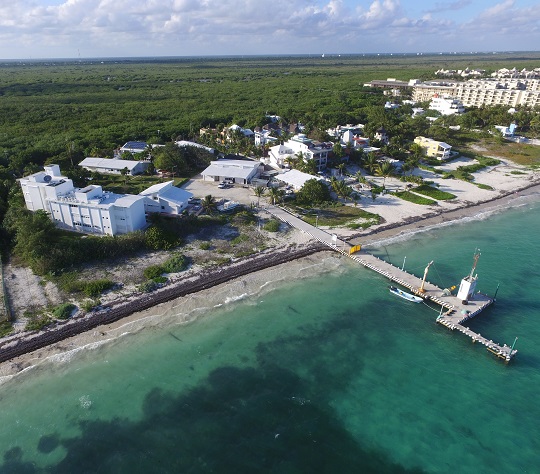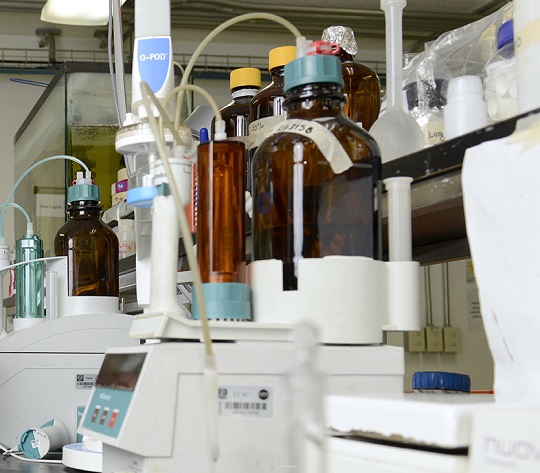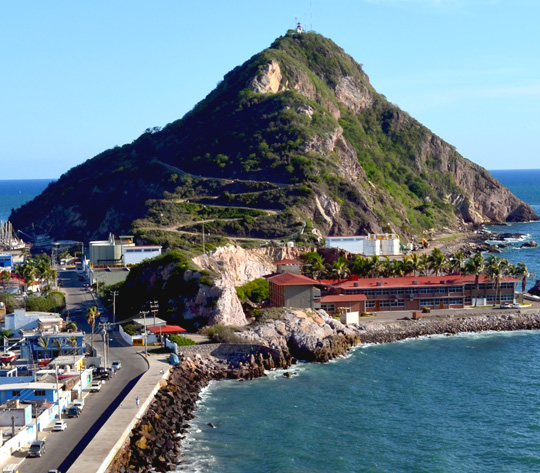Agradecimientos (últimos 5 años)
Omar Célis-Hernández, Leticia Rosales-Hoz, Arturo Carranza-Edwards. 2013.
Heavy metal enrichment in surface sediments from the SW Gulf of México.
Environ Monit Assess. DOI 10.1007/S10661-013-3222-3
John S. Armstrong-Altrin, Ramasamy Nagarajan, Jayagopal Madhavaraju, Leticia Rosales-Hoz, et al.2013. Geochemistry of the Jurassic and Upper Cretaceous shales from the Molango Region, Hidalgo, eastern Mexico: Implications for source-area weathering, provenance, and tectonic setting. C.R. Geoscience 345(2013)185-202.
John S. Armstrong-Altrin. 2014. Evaluation of two multimidimensional discrimination diagrams from beach and deep-sea sediments from the Gulf of México and their application to Precambrian clastic sedimentary rocks. International Geology Review.
Vol. 57, pp 1446-1461. DOI:10.1080/00206814.2014.936055
John S Armstrong-Altrin, Ramasamy Nagarajan, Yong II Lee, Juan J Kasper Zubillaga, Leslie P. Córdoba-Saldaña.2014. Geochemistry of sands along the San Nicolás andSan Carlos beaches, Gulf of California, México: implications for provenance and tectonic Setting. Turkish Journal of Earth Sciences. Vol.23, 533-558.DOI: 10.3906/yer-1309-21.
Carranza Edwards A., A.Z. Márquez-García, Citlali Itzel Tapia-Gonzalez, L. Rosales-Hoz, M.A. Alatorre-Mendieta. 2015. Cambios morfológicos y sedimentológicos en playas del sur del Golfo de México y del Caribe Noroeste. Boletín de la Sociedad Geológica Mexicana, 67(1):21-43.
Rosales Hoz L., A. Carranza Edwards, R.G. Martínez Serrano, M.A. Alatorre Mendieta,J.S. Armstrong Altrin. 2015. Textural and geochemistry characteristics of marine sediments in the SW Gulf of Mexico: implications for source and seasonal changes. Environmental Monitoring and Assessment 187:205.
DOI 10.1007/s10661-015-4423-8
John S. Armstrong-Altrin, María Luisa Machaín-Castillo, Leticia Rosales-Hoz, Arturo Carranza-Edwards, Joan-Albert Sanchez-Cabeza, Ana Carolina Ruíz-Fernández. 2015.Provenance and depositional history of continental slope sediments in the Southwestern Gulf of Mexico unraveled by geochemical analysis. Continental Shelf Research 95(2015): 15-26.
John S.Armstrong, Yong IL Lee, Juan J. Kasper-Zubillaga and Elisandra Trejo-Ramírez 2016. Mineralogy and geochemistry of sands along the Manzanillo and El Carrizal beach areas, Southern México:implications for palaeoweathering, provenance and tectonic setting. Geological Journal. DOI: 10.1002/gj.2792
Celis-Hernández Omar, Rosales-Hoz Leticia, Cundy Andrew B, Carranza-Edwards Arturo 2017. Sedimentary heavy metal (loid) contamination in the Veracruz shelf, Gulf of México: A baseline survey from a rapidly developing tropical coast. Marine Pollution Bulletin. DOI.org/10.1016/j.marpolbl.2017.03.039
Heavy metal enrichment in surface sediments from the SW Gulf of México.
Environ Monit Assess. DOI 10.1007/S10661-013-3222-3
John S. Armstrong-Altrin, Ramasamy Nagarajan, Jayagopal Madhavaraju, Leticia Rosales-Hoz, et al.2013. Geochemistry of the Jurassic and Upper Cretaceous shales from the Molango Region, Hidalgo, eastern Mexico: Implications for source-area weathering, provenance, and tectonic setting. C.R. Geoscience 345(2013)185-202.
John S. Armstrong-Altrin. 2014. Evaluation of two multimidimensional discrimination diagrams from beach and deep-sea sediments from the Gulf of México and their application to Precambrian clastic sedimentary rocks. International Geology Review.
Vol. 57, pp 1446-1461. DOI:10.1080/00206814.2014.936055
John S Armstrong-Altrin, Ramasamy Nagarajan, Yong II Lee, Juan J Kasper Zubillaga, Leslie P. Córdoba-Saldaña.2014. Geochemistry of sands along the San Nicolás andSan Carlos beaches, Gulf of California, México: implications for provenance and tectonic Setting. Turkish Journal of Earth Sciences. Vol.23, 533-558.DOI: 10.3906/yer-1309-21.
Carranza Edwards A., A.Z. Márquez-García, Citlali Itzel Tapia-Gonzalez, L. Rosales-Hoz, M.A. Alatorre-Mendieta. 2015. Cambios morfológicos y sedimentológicos en playas del sur del Golfo de México y del Caribe Noroeste. Boletín de la Sociedad Geológica Mexicana, 67(1):21-43.
Rosales Hoz L., A. Carranza Edwards, R.G. Martínez Serrano, M.A. Alatorre Mendieta,J.S. Armstrong Altrin. 2015. Textural and geochemistry characteristics of marine sediments in the SW Gulf of Mexico: implications for source and seasonal changes. Environmental Monitoring and Assessment 187:205.
DOI 10.1007/s10661-015-4423-8
John S. Armstrong-Altrin, María Luisa Machaín-Castillo, Leticia Rosales-Hoz, Arturo Carranza-Edwards, Joan-Albert Sanchez-Cabeza, Ana Carolina Ruíz-Fernández. 2015.Provenance and depositional history of continental slope sediments in the Southwestern Gulf of Mexico unraveled by geochemical analysis. Continental Shelf Research 95(2015): 15-26.
John S.Armstrong, Yong IL Lee, Juan J. Kasper-Zubillaga and Elisandra Trejo-Ramírez 2016. Mineralogy and geochemistry of sands along the Manzanillo and El Carrizal beach areas, Southern México:implications for palaeoweathering, provenance and tectonic setting. Geological Journal. DOI: 10.1002/gj.2792
Celis-Hernández Omar, Rosales-Hoz Leticia, Cundy Andrew B, Carranza-Edwards Arturo 2017. Sedimentary heavy metal (loid) contamination in the Veracruz shelf, Gulf of México: A baseline survey from a rapidly developing tropical coast. Marine Pollution Bulletin. DOI.org/10.1016/j.marpolbl.2017.03.039


























































